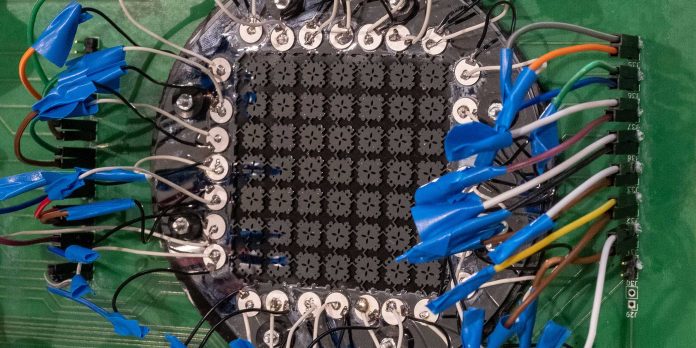Researchers at ETH Zurich have developed a sensory capable of using energy from sound waves to power electronic devices. But what does this mean for conventional batteries?
Sources claim this new technology could eliminate the need for millions of batteries whilst also addressing the growing environmental concerns associated with battery waste.
Traditional sensors
Traditional sensors in infrastructure monitoring or medical devices rely on constant battery power, leading to a substantial waste problem. An EU study calculates that by 2025, 78 million batteries will be discarded daily.
EU study calculates that by 2025, 78 million batteries will be discarded daily
In response, a team led by Marc Serra-Garcia and ETH geophysics professor Johan Robertsson created a mechanical sensor that operates solely on vibrational energy derived from sound waves. Unlike traditional sensors requiring external energy sources, this newly developed sensor taps into the vibrational energy in specific sound waves.
When the designated word or tone triggers the sensor, it vibrates and generates a small electrical pulse that activates an inactive electronic device.
What are the potential applications of this technology?
The potential uses of this technology are extensive, ranging from monitoring infrastructure to medical implants. The prototype, already branded by the researchers, can distinguish between spoken words such as three and four.
For example, the word “four” causes more resonant sound energy, causing the sensor to vibrate and initiate device activation, whereas “three” remains fixed. The team aims to enhance the sensor’s capabilities to distinguish between up to twelve different words, including standard machine commands like “on,” “off,” “up,” and “down.”
Construction of the sensor
The sensor is constructed from a metamaterial composed entirely of silicone, empty of toxic heavy metals and rare earths found in conventional electronic sensors. The structure of the sensor, comprised of interconnected plates acting like springs, is designed using computer modelling and algorithms.
Potential applications of this battery-free sensor include earthquake and building monitoring, where it can detect specific sound or wave energy associated with structural issues.
Furthermore, the sensor could be useful in monitoring decommissioned oil wells and detecting gas leaks without constant electricity consumption.
What are the medical benefits?
The medical field could benefit significantly from this innovation. Cochlear implants, vital for people who are deaf or hard of hearing, typically rely on batteries for power, necessitating frequent replacements.
The battery-free sensor could help this issue by providing a continuous power supply for signal processing. The sensor may also find applications in continuous eye pressure measurement, where the limited space in the eye prohibits using battery-powered sensors.
Future applications
The researchers are exploring further miniaturisation, aiming to reduce the sensor’s size to a thumbnail. With plans to launch a solid prototype by 2027, the team envisions broad applications for zero-energy sensors in various industries.











